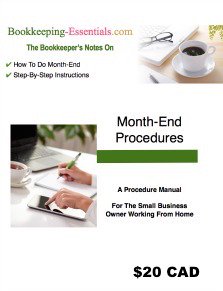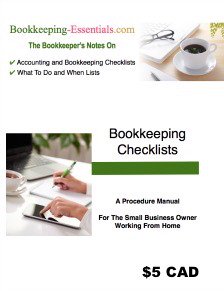
Basic Ratio Analysis
Quick Accounting Training
by L. Kenway BComm (Retired CPB)
Go beyond the basics of learning to read and understand your financial
statements. Learn what ratio analysis can tell you about your business
and how to act on what is uncovered. Is your business in cardiac arrest? Let's find out.
Ratios on their own don't
have a lot of meaning. They become a very useful tool when the
calculations are compared over a number of years as trends start to
become evident.

What You'll Find In This Chat ...
Generally there are four types of ratios that we will be looking at:
- Liquidity Ratios - resources available so you can pay your bills
- Operating Ratios - how efficient you are at managing your capital
- Profitability Ratios - your ability to control expenses and earn a return on your investment in the company
- Leverage / Solvency Ratios - percentage of debt in your company indicating suppliers' protection or whether you can take on more debt or the chance that you may go bankrupt
So fill up your teacup and let's get started on this quick accounting training session.
Liquidity Ratios
For now, let's start your accounting training with a look at your working capital and your current ratio.
Working Capital = Current Assets - Current Liabilities
(The larger this number is, the better. If it equals zero, you have no working capital.)
Current Ratio = Current Assets / Current Liabilities
(The higher this ratio is, the better. If it equals one, you have no working capital.)
These two calculations are measuring your business's liquidity. They calculate whether your business can meet their debt obligations when they become due. The more cash you have, the more likely you will be able to make it through the tough times or the next recession.
What does liquidity ratio analysis tell me? How can I use them in my business?
In easy to understand language, these calculations determine whether you
will be able to meet your payroll, pay your suppliers, and pay down
your loans on the agreed upon payment schedule.
As a small
business owner, you can improve/manage your working capital by
increasing your current assets and/or decreasing your current
liabilities.
Operating Ratios
Now let's continue this accounting training by turning our attention to your accounts receivable (AR). Two useful ratios you might want to calculate are:
AR Turnover = Net Credit Sales for Year / Average AR for Year
(This number shows you the average number of times your AR turned over (collected) in a year compared to sales.)
To calculate this ratio you need two pieces of information.
Credit Sales
are the sales reported on your income statement that were paid by
extending credit. If you don't have the split, you can use your total
sales but the calculation will not be as accurate.
To calculate your average receivables,
take your AR balance at the end of last month + your AR balance at the
end of the same month last year. Now divide by 2 and you have your
average AR for the year.
What does the turnover ratio analysis tell me? How can I use it in my business?
A higher ratio infers that you are successfully collecting from
your customers ... and that you have tight credit policies ... or your
business deals mainly on a cash basis.
A lower ratio
indicates problems and infers your customers are not paying you on a
timely basis or overstocked inventory. You may experience cash flow
crunches due to late or non payments. Also, the longer an account is
outstanding, the more risk to you that it will not be collectible.
While there is no actual standard for this next operating ratio
due to the unique circumstances of each business ... you can sometimes
find a standard for your industry to compare against.
Days to Collect AR = 365 days / AR Turnover in Year
(This shows you the average number of days it took for your customers to pay you. As you can see, it is based on your previous calculation. If your turnover calculation is wrong, this ratio will be wrong as well.)
What does the days to collect ratio analysis tell me? How can I use it in my business?
If your answer comes in under 30 days, then you know your customers are paying their accounts on time.
The faster you collect your receivables, the better. When customers pay you, you will be able to pay your suppliers on time or buy new product. When receivables are paid quickly and on time, there is less risk to you and your business.
If it is taking longer than 30 days for your customers to pay you, you need to take action. Your business could get in serious trouble if your accounts receivables are not actively managed. Consider implementing these collections procedures so your AR does not get away from you.
Nina Kaufman's home-study program How to Train Your Clients to Pay You can teach you how to decrease your receivables and increase your cash flow.
You might also want to calculate the bad debt to sales ratio. Simply divide your bad debt expense by your credit sales. This ratio measures your expected uncollectible AR. If it is increasing, it indicates a future write-off is possible.
Profitability Ratios
Moving on in this brief accounting training session, let's turn our focus to profitability.
When learning about the various components of the income statement, we chatted about the gross profit. Sometimes this number makes more sense if it is expressed as a percentage.
We said that ...
Gross Profit = NET Sales - Cost of Goods Sold
where
Net Sales = Total Sales - Returns - Sales Allowances - Discounts
(If this number is positive, you made a profit before taking into accounting your marketing and administration expenses.)
Gross Profit Margin = Gross Profit / Net Sales (or Total Revenue)
(In general, the higher this number is, the more efficient your business is.)
This ratio explains how much money you have left over to cover marketing and administrative expenses ... you know important stuff like wages, debt obligations, government taxes.
You may also want to calculate profit margin.
Profit Margin = Net Income / Net Sales (or Total Revenue)
(In general, the higher this number the better.)
This ratio calculates your safety margin if things start to "go south". It explains to readers of your financial statement how well you converted your sales into profits.
Remember earlier I said that you want to look at trends when doing ratio analysis.
How can I use profitablity ratio analysis in my business?
In AIPB's accounting training publication Mastering Financial Statement
Analysis, they suggest if your profit margin is falling consistently
over numerous periods, look to see if your business also has falling
sales, increased cost of goods expenses (relates to gross profit margin)
or expenses (relates to profit margin) that have not been passed onto
customers or maybe even theft.
When you perform your monthly
financial review, keep your eye out for unrecorded sales or overstated
expenses. AIPB's publication suggests investigating changes between
years that are greater than 10%.
Don't focus solely on your gross
profit margin though. Two other ratios are also important, return on
equity and return on assets, which we'll discuss another day.
Joshua Kennon wrote an article titled A Deeper Look at Gross Profit and Gross Profit Margin.
In
this article, Joshua explains that if you can turn over your assets
more frequently, you can "can generate more absolute profit relative to
the capital invested in the enterprise than one with slower turnover but
higher profit margins".
Joshua uses Walmart and Microsoft as
examples. After examining the different business models each company
uses, Joshua stresses that the key is decide which business model you
are going to use and stick with it ... "as long as it works".
Ahhh,
I forgot to tell you the business models Joshua looked at ... they were
the low gross profit margin business model and the high gross profit
margin business model.
That's it for this section on accounting training ... for now.
Leverage / Solvency Ratios
Let's wrap up this accounting training by turning our attention to your debt ratio and your debt service ratio.
Total
liabilities in the debt ratio formula is often referred to as "total
debt". This ratio explains how leveraged your business is.
Debt Ratio = Total Liabilities / Total Assets
How can I use the debt ratio analysis in my business?
Creditors like this ratio to be low ... the lower the better for them ... aim for .5 or less.
Owners sometimes like this ratio to be high... especially if they like risk. If the business fails, the owner walks away with only a small to moderate loss. You can see how this would make creditors nervous ... and they may begin requesting repayment of debt.
Bankers and long term creditors especially like to look at your debt service ratio
because it assures them your business can service its long term debt
from its operating profits. For them, your earning power is an important
factor in whether they will loan your business money. Any weakness here
may mean it is tough to impossible to get a bank loan or other source
of financing.
This ratio is also referred to as interest coverage or times interest earned.
Debt Service = (Net Profit + Interest Expense +
Income Tax Expense) / Interest Expense
What does the debt service ratio analysis mean for my business?
The higher this ratio the better. If it falls below 1.5, lenders may stop lending your business money. Why?
This ratio shows that your low coverage means you will likely face difficulties if you borrow more funds. Two or higher is good but your banker is most likely to compare your ratio with your industry average.
If you are looking for short term financing, your banker will be more interested in your working capital.
I found a really great Financial Difficulties checklist over at Keith Anderson CPA-CA's website albertacpa.com (formerly cabusinessadvisor.ca). It lists 39 early warning signs and 9 late warning signs. It is worth looking at to see how your business compares.
I'll wrap this up with this reminder ... just remember, ratios are most useful when looked at over a number of periods ... so you can identify trends ... and be proactive if necessary.

It's been great chatting with you .
Your tutor Lake
Enjoy A Tea Break With
Me Today. Let's Chat!
Use the search feature to quickly find the
information you're looking for.
Join Me On Facebook
Help support this site by "liking" me! Here's where I post current information.
Listed Under Websites NOT Local Business.
This website is NOT associated with the business operating in Bonnyville AB.



